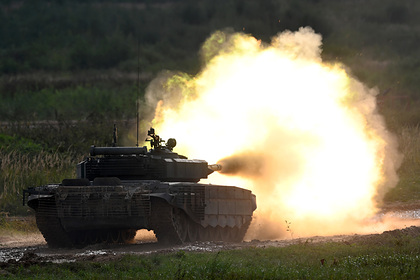The main disadvantage of the Russian T-90 tank is the low resistance to fire of modern anti-tank missiles. This conclusion was reached by former US Army officer Brent Eastwood in a material for 19FortyFive.
The author emphasizes that during the fighting in Syria, at least five T-90S tanks were disabled by the fire of anti-tank missile systems (ATGMs). Eastwood called the tank tower, which was fired from an ambush, the most vulnerable place.
The booking of the T-90 provides a high level of protection from the shells of other tanks. Combined armor, which is complemented by dynamic protection "Kontakt-5", reduces the risk of damage by armor-piercing projectiles. The author notes that the tank can also provide protection against anti-tank missiles, but in Syria the enemy used outdated TOW-2A ATGMS.
19FortyFive writes that the Javelin ATGM can pose a great threat to the T-90. Eastwood explains that the TOW-2A operator must accompany the target from the moment the missile is launched to the hit, and Javelin works on the principle of "shot and forgot". Given the range of the missile complex, this allows ambushes to destroy T-90 tanks.
However, the T-90 is equipped with the Shtora-1 optoelectronic counteraction system (COEP), which can detect the guidance of an enemy missile. The COEP is able to automatically set up a smoke screen to mask the tank.
"Russia has a problem with its T-90 tanks, and this is a threat from anti-tank missiles, especially Javelin. If the old TOW can break through armor, you know Javelin can too. Thus, this fight boils down to the competence and skill of the T-90 crews and personnel firing Javelin," Eastwood concluded.
Earlier, the United States called weapons for a long war with Russia. Breaking Defense writes that the United States and its allies will need modern tanks, infantry fighting vehicles and towed artillery.
Daniil Irinin

